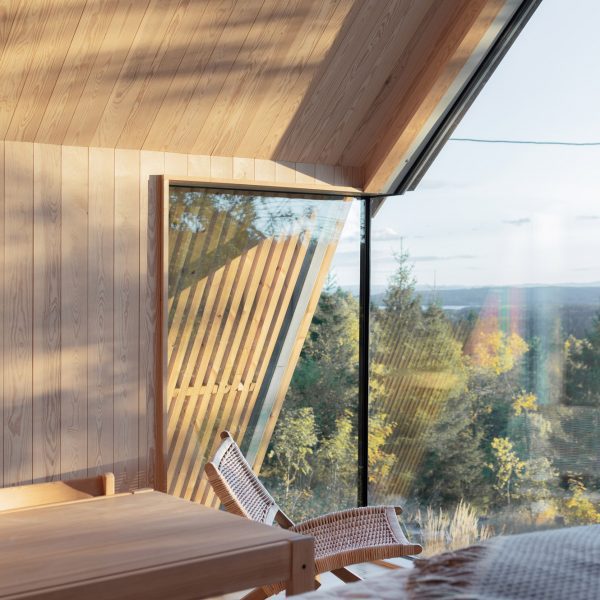Our newest lookbook collects eight cabin interiors united by their calming timber accents and escapist settings, starting from an English conservation space to a personal Norwegian island.
Sometimes constructed with wooden, cabins are widespread in rural areas and are sometimes designed as fleeting residing quarters to supply calming retreats.
As temperatures start to drop within the northern hemisphere, we have now rounded up eight examples of cosy cabins from throughout the globe.
That is the most recent in our lookbooks sequence, which supplies visible inspiration from Dezeen’s archive. For extra inspiration, see earlier lookbooks that includes self-designed properties by architects and designers, members’ golf equipment and dialog pits.
Cabin, Norway, by Rever & Drage
Native structure studio Rever & Drage designed this timber cabin in Norway’s forested Nordmakka area.
A enormous angular window cuts by way of its in any other case established type, creating an illuminated inside dressed with elementary wood furnishings and steel-topped kitchen counters.
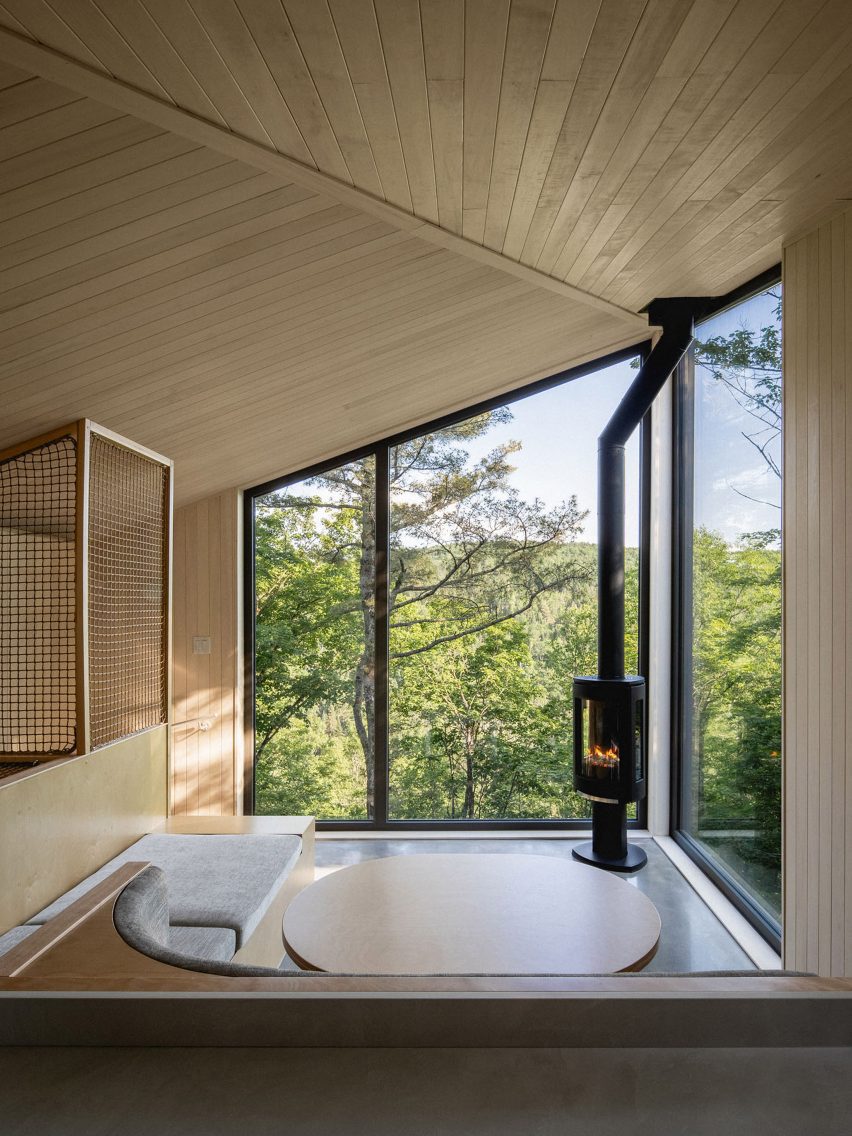
La Cime, Canada, by Naturehumaine
La Cime, or The Prime, is a woodland vacation cabin in Lanaudière, Québec.
Canadian studio Naturehumaine designed the one-bedroom “micro chalet” with white-pine panelling on the partitions and ceilings, which enhances built-in plywood furnishings.
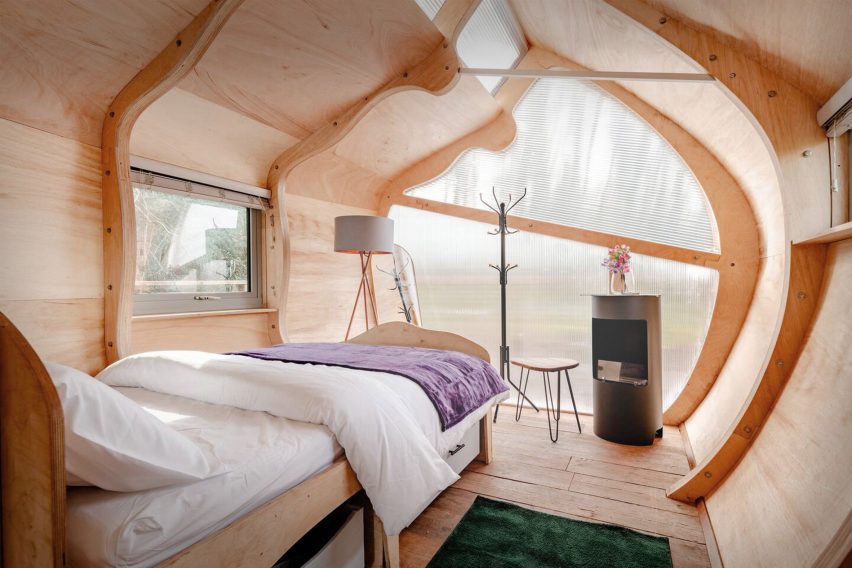
Monocoque Cabin, UK, by Peter Markos
Wrapped by an exterior pores and skin much like an eggshell, Monocoque Cabin is a self-build off-grid timber construction by architect Peter Markos.
The cocoon-like Shropshire cabin is punctuated by translucent polycarbonate openings that draw daylight into the inside and illuminate elementary however cosy residing areas.
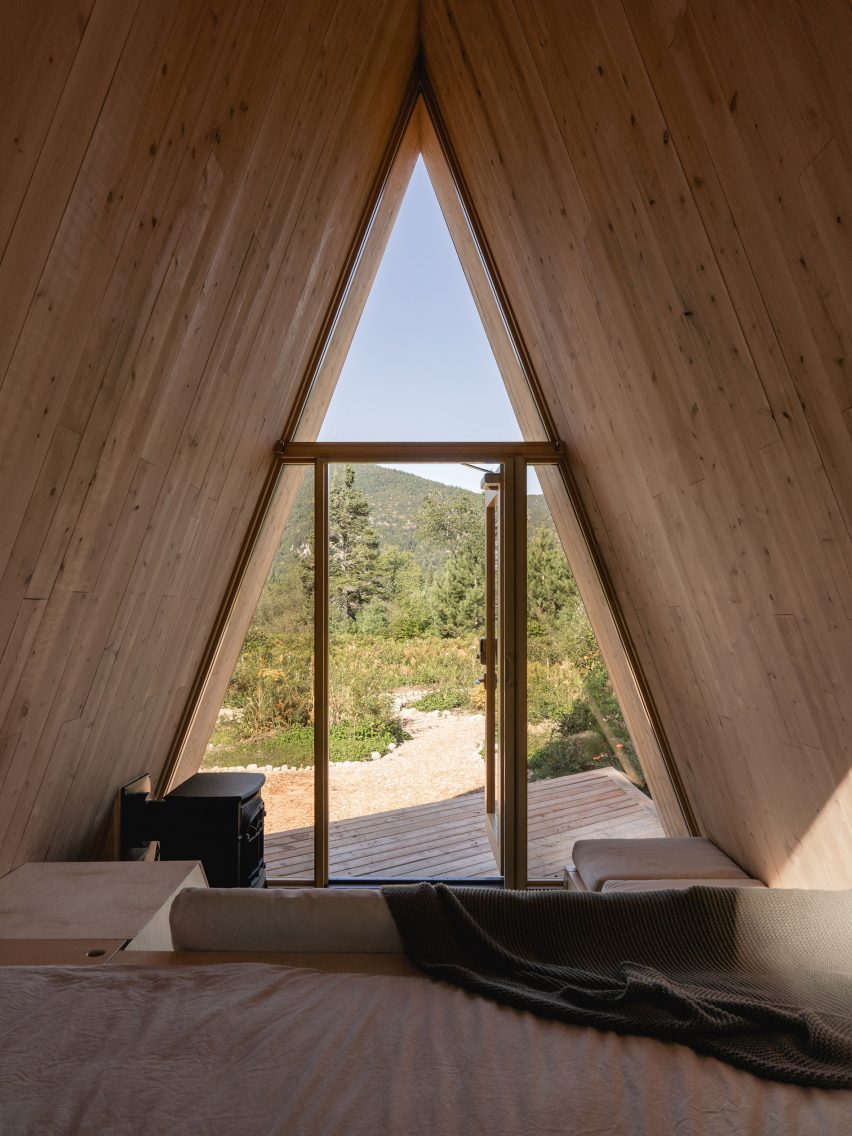
Farouche Tremblant cabins, Canada, by Atelier l’Abri
4 rental micro-cabins had been constructed by Canadian studio Atelier l’Abri on the Farouche Tremblant agrotourism web site in Québec’s Mon-Tremblant Nationwide Park.
Characterised by established A-frame buildings that nod to Nineteen Fifties and 60s structure, the cabins characteristic minimalist and impartial interiors.
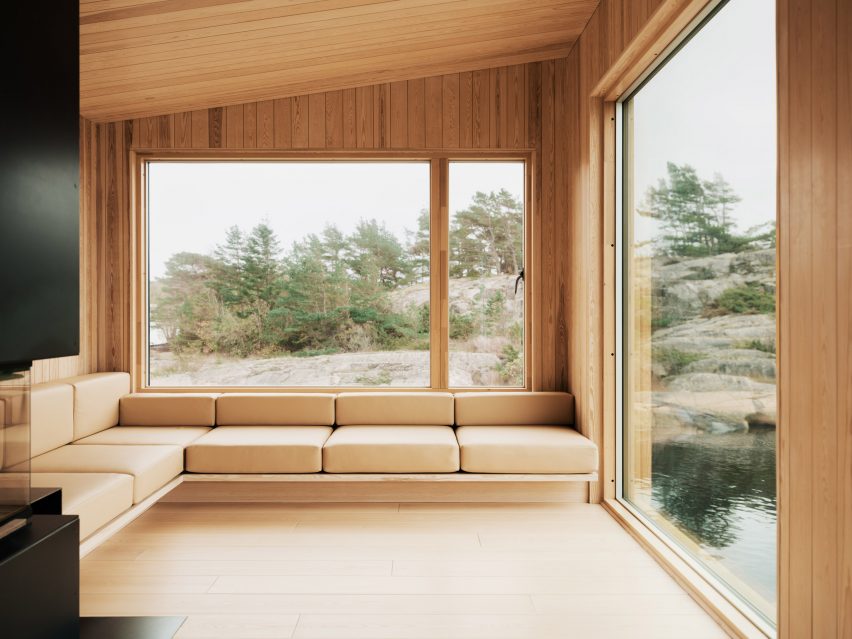
Kjerringholmen, Norway, by Line Solgaard Arkitekter
Additionally outlined by minimalist, sandy hues, Kjerringholmen is a raised and ash-clad cabin on a tiny non-public island in Hvaler, Norway.
Line Solgaard Arkitekter designed the cabin, which has a pared-back, wood-lined inside and options enormous rectilinear home windows for taking within the dramatic surrounding panorama.
“The fundamental idea was to create an escape from metropolis life – a retreat into nature,” defined the studio’s founder Line Solgaard.
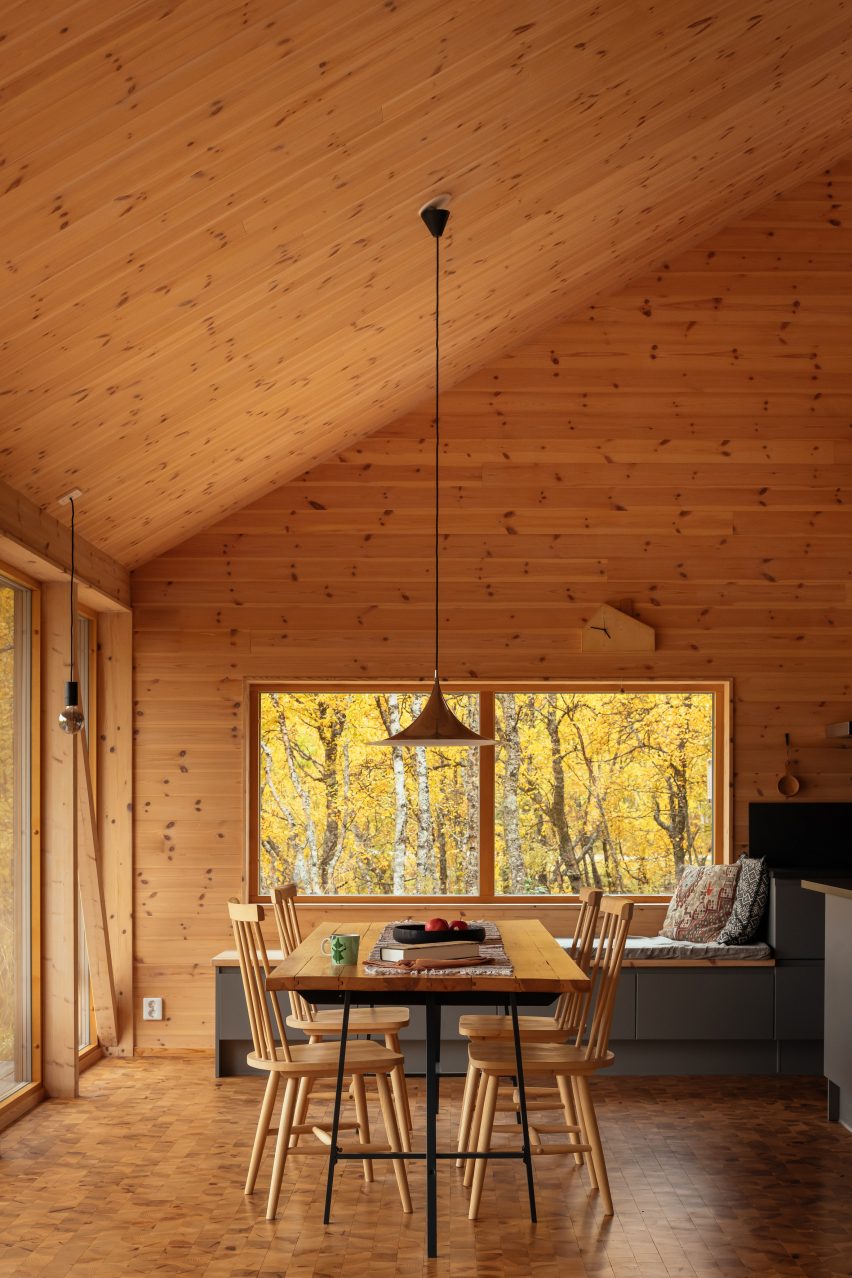
The Hat Home, Sweden, by Tina Bergman
Spruce panels on the partitions and end-grain spruce blocks for the ground had been utilized to the residing areas of this cosy however tall-ceilinged cabin in Tänndalen, western Sweden.
A boxy, cushioned window seat supplies a connection to the forested setting outdoors. Referred to as The Hat Home, the challenge was designed by London-based architect Tina Bergman.
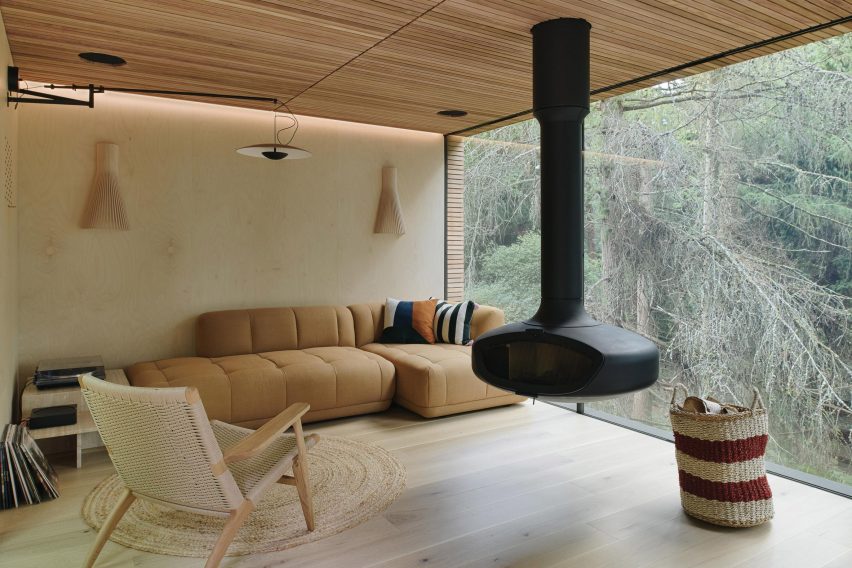
Wanting Glass Lodge, UK, by Michael Kendrick Architects
Positioned in a conservation space in East Sussex, Wanting Glass Lodge is a modestly sized cabin set on a sloping web site and constructed with out felling any present bushes.
Inside, a wood-burning range was designed with timber sourced from fallen bushes close by. A plump L-shaped couch and low-slung armchair had been positioned to soak up floor-to-ceiling views of the wooded web site.
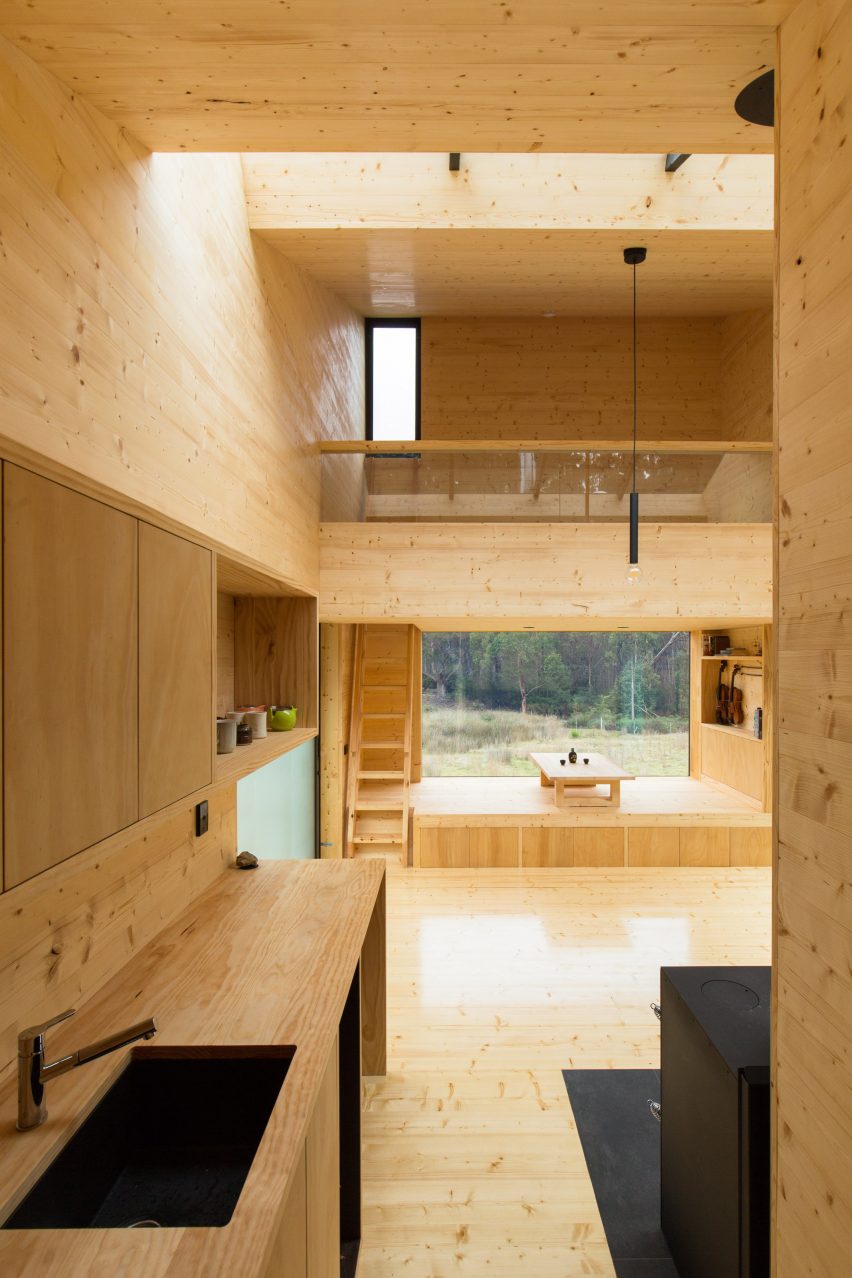
Bruny Island Cabin, Tasmania, by Maguire + Devin
Baltic pine traces nearly each floor of this off-grid Tasmanian cabin, designed by structure studio Maguire + Devin to characteristic solely built-in furnishings.
Other than a freestanding low desk and a mattress, each aspect within the cabin is a part of its body. This extremely crafted minimalist design was chosen to reference established Japanese homes.


